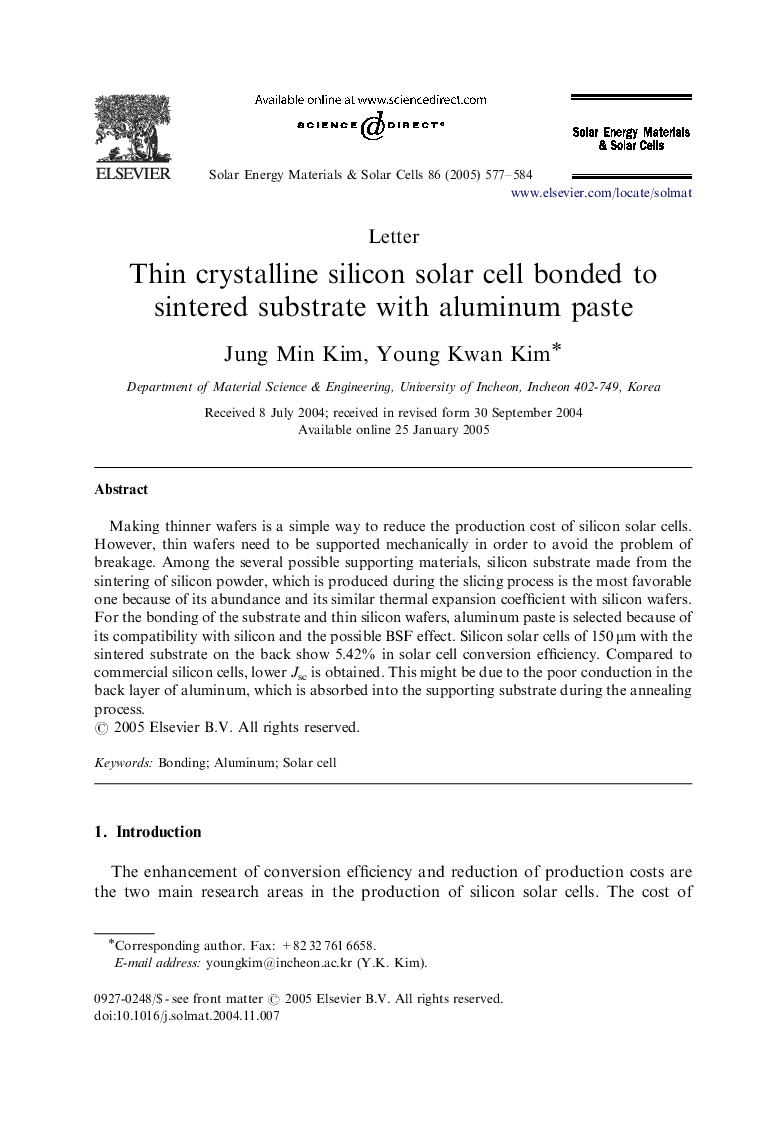| Article ID | Journal | Published Year | Pages | File Type |
|---|---|---|---|---|
| 10248975 | Solar Energy Materials and Solar Cells | 2005 | 8 Pages |
Abstract
Making thinner wafers is a simple way to reduce the production cost of silicon solar cells. However, thin wafers need to be supported mechanically in order to avoid the problem of breakage. Among the several possible supporting materials, silicon substrate made from the sintering of silicon powder, which is produced during the slicing process is the most favorable one because of its abundance and its similar thermal expansion coefficient with silicon wafers. For the bonding of the substrate and thin silicon wafers, aluminum paste is selected because of its compatibility with silicon and the possible BSF effect. Silicon solar cells of 150 μm with the sintered substrate on the back show 5.42% in solar cell conversion efficiency. Compared to commercial silicon cells, lower Jsc is obtained. This might be due to the poor conduction in the back layer of aluminum, which is absorbed into the supporting substrate during the annealing process.
Keywords
Related Topics
Physical Sciences and Engineering
Chemical Engineering
Catalysis
Authors
Jung Min Kim, Young Kwan Kim,
